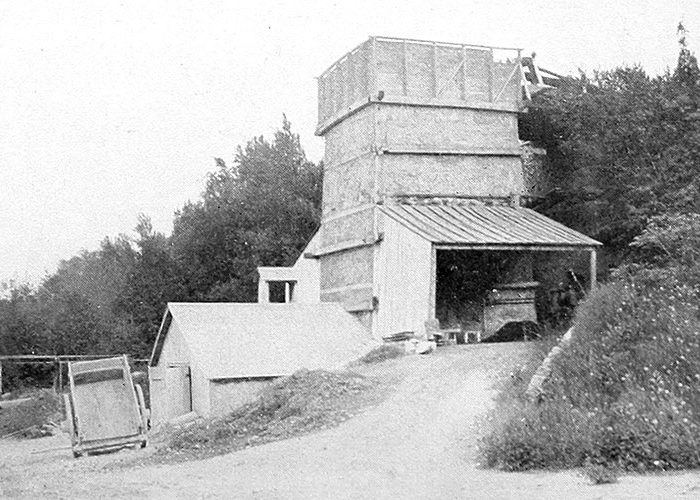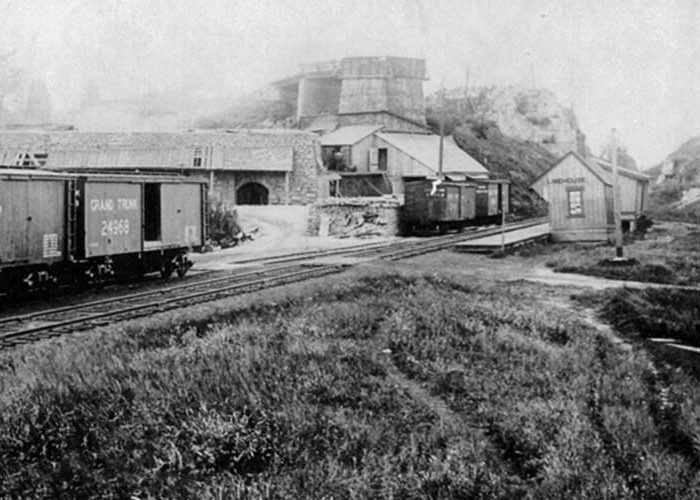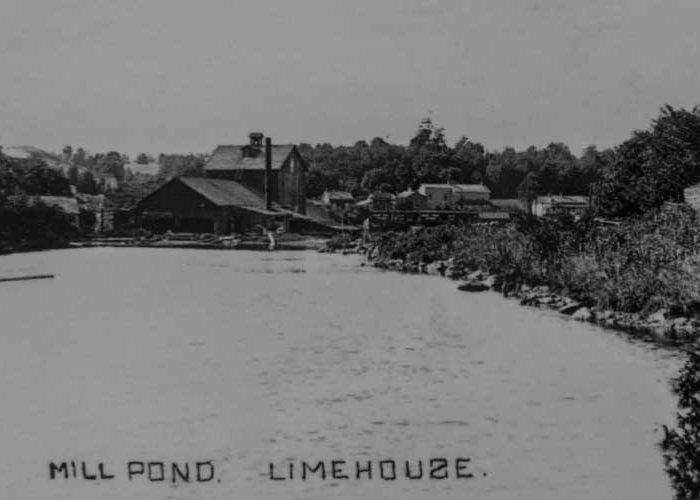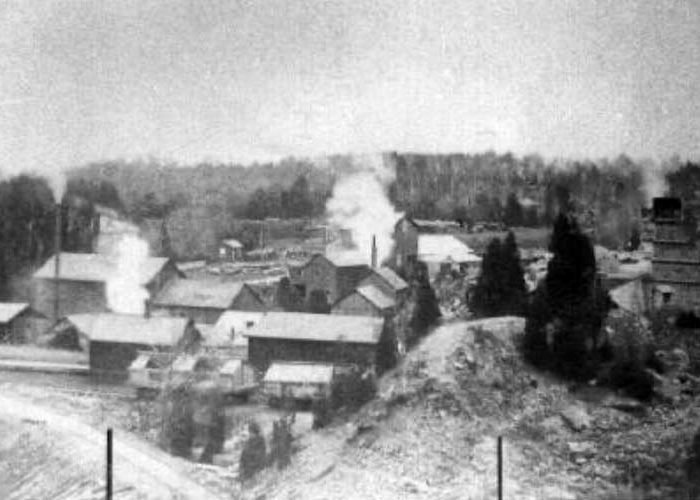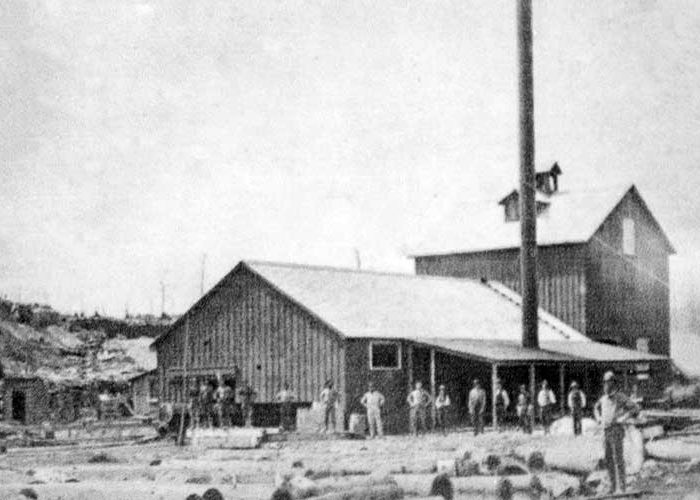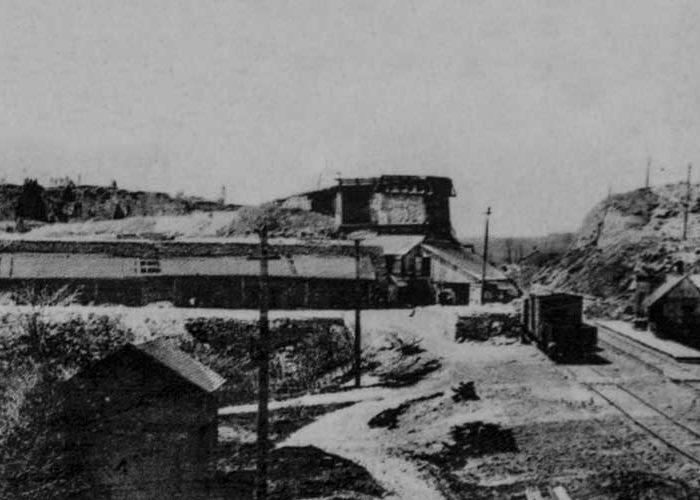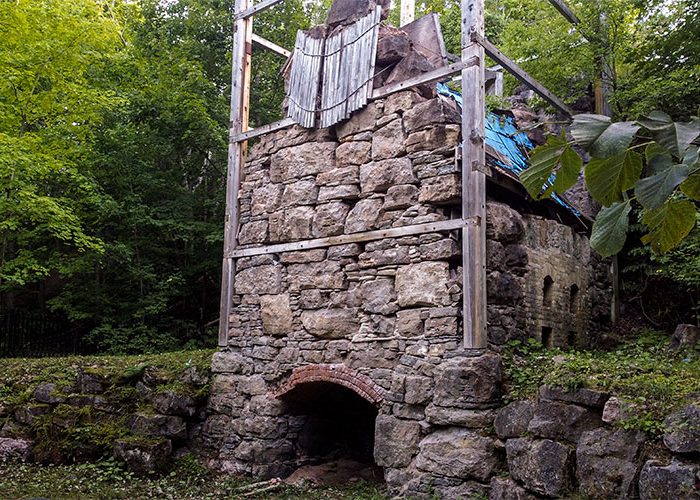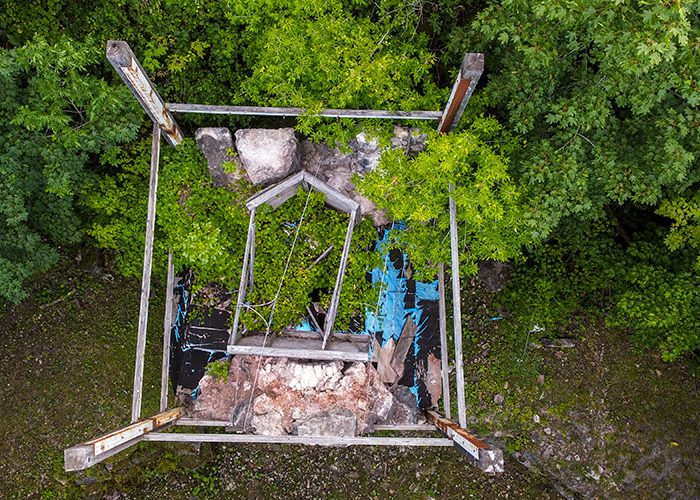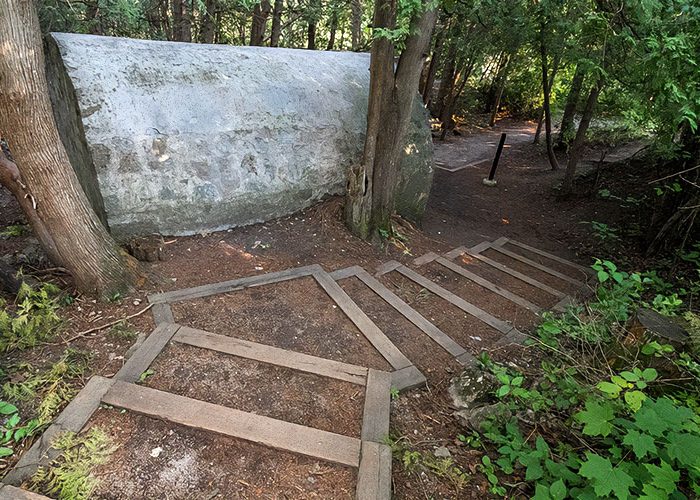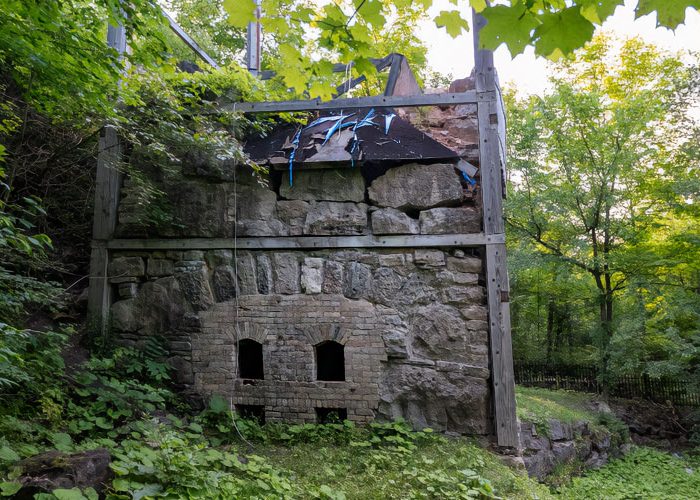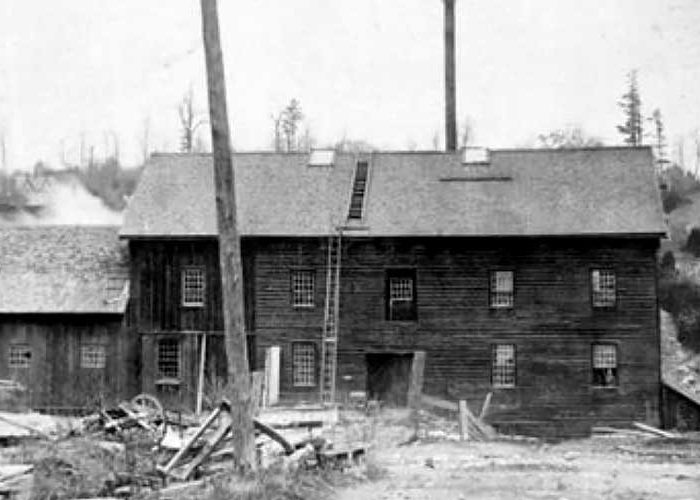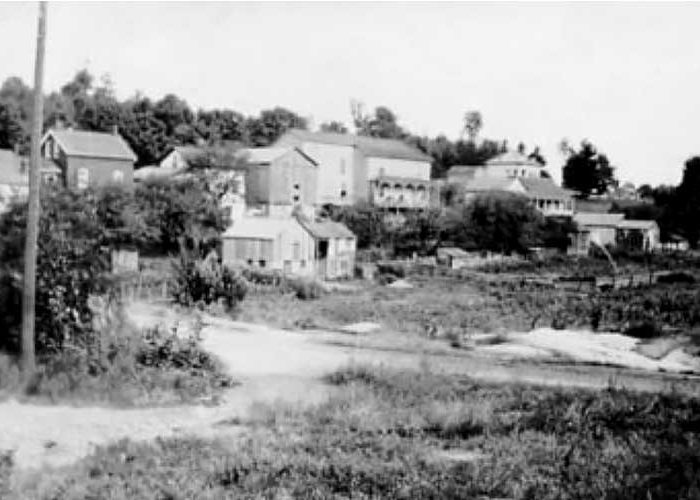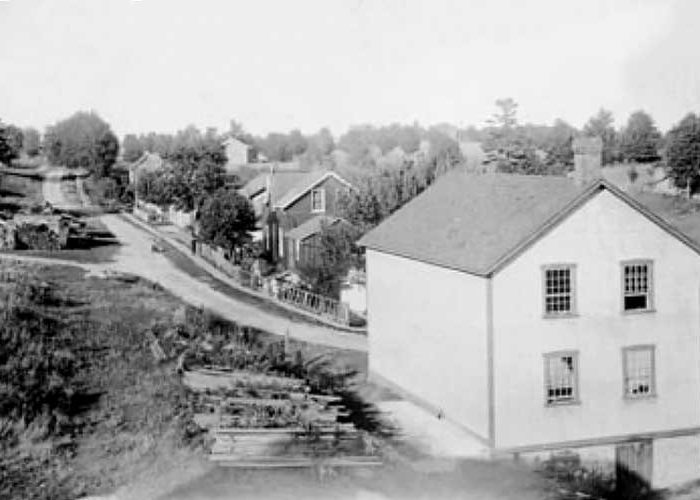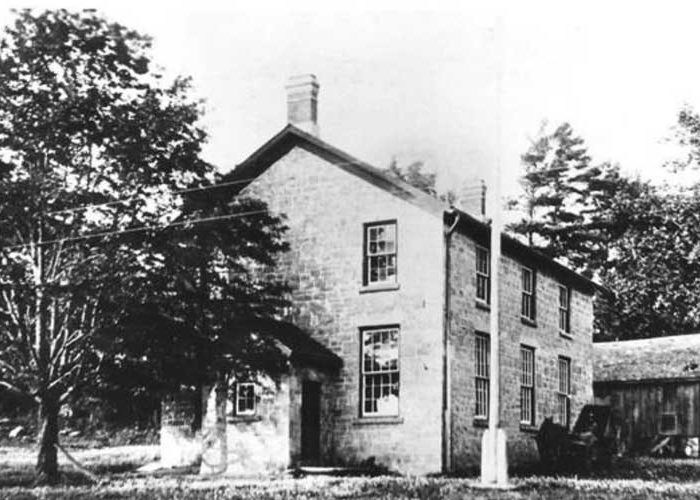In Halton Hills, formerly Esquesing Township, midway between Acton and Georgetown, where Black Creek, a brand of the Credit River cuts through the Niagara escarpment and where 22 Sideroad and 5th Line Esquesing meet, lies Limehouse.
The land upon which Limehouse is located was last used by the Mississauga tribe of Native Peoples. The large number of settlers emigrating from the British Isles and the United States required the government of Upper Canada to purchase land from the natives, known as the Mississauga Tract, beginning in 1805.
Esquesing Township was surveyed in 1818.
The first settler in the Limehouse area was Adam Stull. He obtained the Crown deed for Lot 22, Concession 6 (200 acres) in 1820. John Meredith (Maradith) secured the patent for Lot 23, Concession 6 in 1822. The northern part of Limehouse is built on the west part of John Meredith’s 200 acres.
On July 5, 1832, for the sum of 2 pounds and 10 shillings, Meredith sold two acres to the Trustees of the Presbyterian congregation for the purpose of a burying ground and a church, Before this date, one grave was located on the land.
The church was not built until 1861. The building was a joint effort of the Presbyterians, Episcopalians and the Methodists and was first known as Limehouse Union Church. The first minister, Rev.
Ewing and his family are buried in Limehouse cemetery.
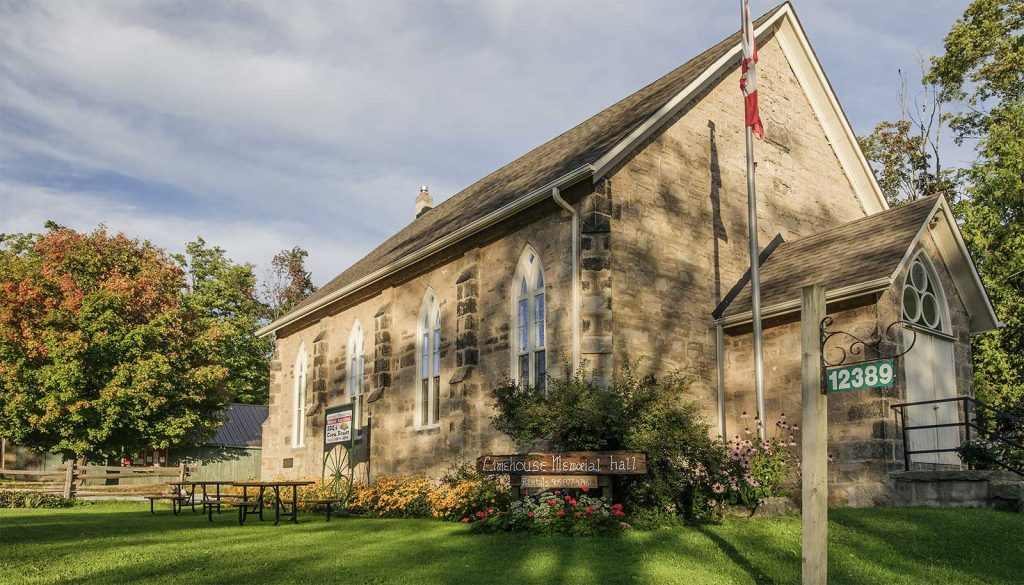
In 1876, Mr. Gowdy Sr. donated land to the local Methodists. A find stone church was built. The Church closed in 193o’s. Through the efforts of the local Women’s Institute, the building was reopened as Limehouse Memorial Hall.
About 1840 the Stull property was sold to Mr. Clendenning, who named the community Fountain Green. Ninian Lindsay bought the property and some of the Meredith land and started the lime industry. Soon there were two companies burning a large quantity of lime – “Lindsay and Farquhar” and “Bescoby and Worthington.” Mr. Farquhar also operated a freestone quarry.
Limehouse grew slowly. Lots were not surveyed until 1856.
Then changes of ownership in the kilns occurred. Mr. Farquhar bought out Mr. Lindsay and operated four kilns. In 1856 Gowdy and Moor bought the Bescoby kilns. Gowdy and Moore had six kilns, a water lime mill and a saw mill.
Changes in the lime kiln ownership occurred until 1917 when lime operation ceased. Blasting for quarrying was discontinued about the same time.
The Grand Trunk Railway, now Canadian National Railways, was built through Limehouse in 1856.
A long “cut” had to be blasted through Limehouse, earning it the affectionate name of “The Rock.” During the construction of the line, a temporary settlement of two hundred workers and their families was located in the village.
Mr. John Newton built a mill and ground all the water lime in the construction of the GTR main line. In the water lime mill, lumps of burnt lime were ground fine, “Slaked” with water, then mixed with sand and cow hair to make mortar; or mixed with water only to make a “putty coat” for interior wall finishing.
John Newton became the first postmaster when the Post Office was opened in 1857.
At that time Fountain Green was renamed Limehouse.
Limehouse Post Office was closed in 1988.
John Newton started a woollen mill, known as the Empire Blanket Company in 1852 and also operated a saw mill.
Messrs. Melkie, Newton and Company began a fireproof paint factory. Blue and red clays used in paint manufacturing were extracted from Lot 22, Concession 7. The paint company produced six colours. Several awards for the quality of the paints were won at exhibitions. The paint was less expensive, lead free and durable. Paint was exported to the United States, Great Britain and Australia.
Rain water’s chemical action with limestone over the years created many caves and tunnels which were great places for rustlers, thieves, smugglers and bootleggers. Stories about using the caves for whisky stills and even murder gave the area an interesting aura.
Limehouse was a busy community with three hotels, three stores, several mills and a prosperous lime industry.
In 1876, 4,130 tons oflime and lumber were shipped from the station.
On October 12, 1893 disaster struck! A fire broke out in the woollen mill.
That mill, the paint factory, the lumber mill and 100 cords of wood belonging to the water lime mill, went up in flames. For a time it was feared that the whole village would be lost, but the rapid arrival of the horse-drawn fire engine from Georgetown saved the day. The fire was a severe blow to the economy of Limehouse because sufficient insurance to rebuild had not been carried.
In 1917, the Toronto Suburban Electric Railway (the Radial) opened a station on the 5th Line at the foot of Gibraltar Hill.
This service enabled the villagers to travel to work or school and to ship and receive goods at stops between Toronto and Guelph. The company encountered financial difficulties and “the Radial” ceased to run in 1931.
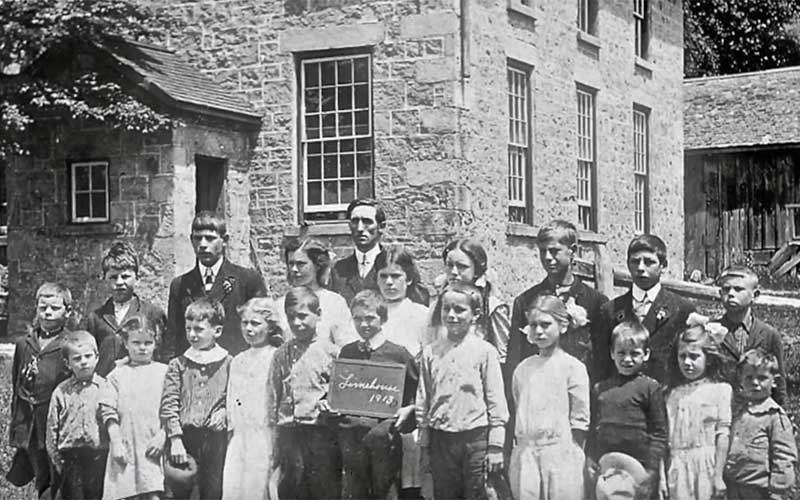
Education was not forgotten.
The first Limehouse school was of log construction, built about 1845 on Lot 20, concession 6 on the 5th Line, 1 mile south of Limestone.
It was replaced by a one room stone building in 1862. An upper room was added in 1875 during the prosperous years. The upper room was closed in 1890. However it reopened in 1954.
The school, SS. No. 9, Esquesing or “Gibraltar School” was closed in 1962 when the present Limehouse School was opened in the centre of the community.
With the loss of the mills in the fire and the closing of the lime kilns and the quarries, most industry in Limehouse ended. The village retreated to its pleasant, quiet and friendly atmosphere, no longer in the “limelight!”
This pamphlet was written by Jean Ruddell for the Esquesing Historical Society
Many thanks to the Halton Hills Public Libraries

